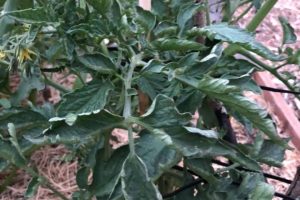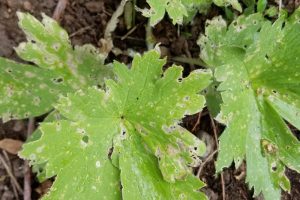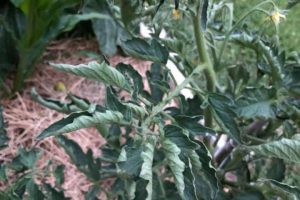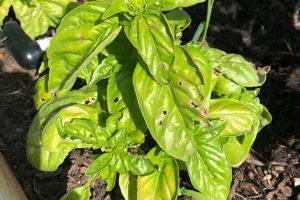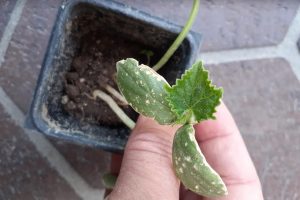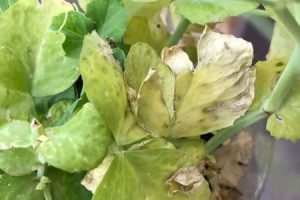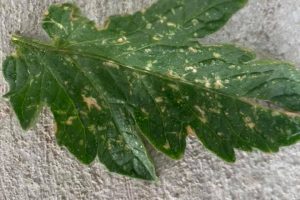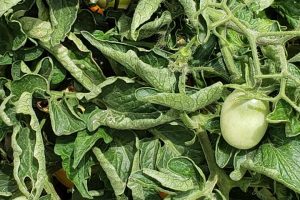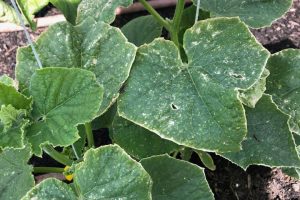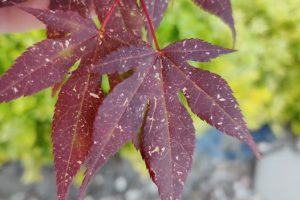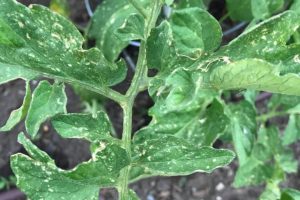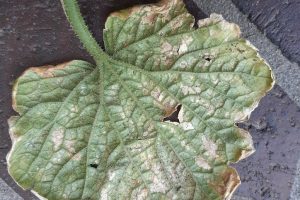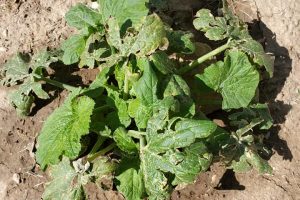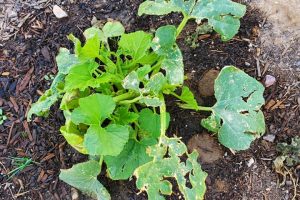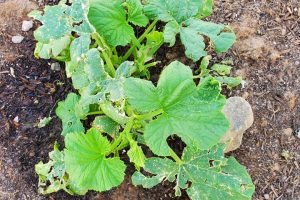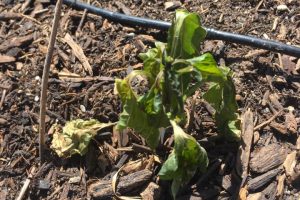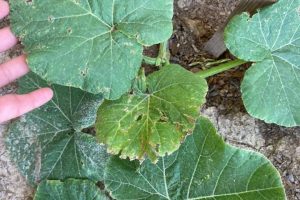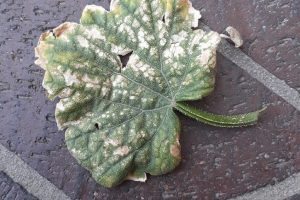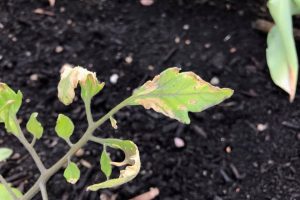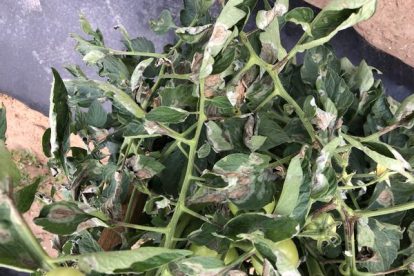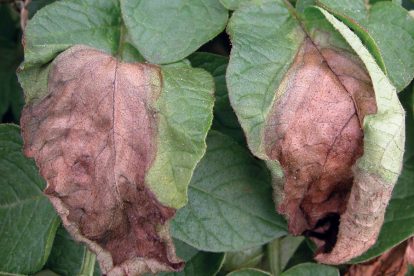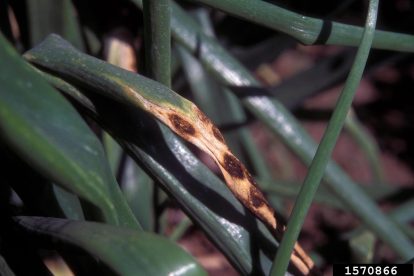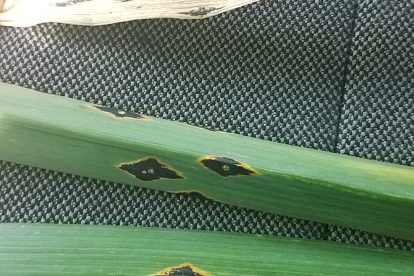Printable PDF
Vegetable Responses to Recent Weather
The past two weeks, Northern Utah has received some significant rain, hail, thunderstorms, and in some areas… snow! Vegetable growers have reported seeing serious signs and symptoms on their plants. Growers need to assess their crops after these events and familiarize themselves with distinguishing weather damage from insect/disease damage. For areas that received hail, the size of the hailstone and wind velocity can be factored in identifying the severity of damage to the foliage. Many cucurbit crops such as squashes and melons will look rough at first, as their large leaves tatter easily. Fortunately, mature-enough plants that have intact growing points and established root systems will likely recover. Other options include; supplying plants with extra nitrogen to help crops generate new foliage growth. Wounds received from hail may leave crops vulnerable to fungal or bacterial infections. As soon as these wounds are observed, it may be a good idea to apply a fungicide protectant (copper or chlorothalonil based products). These products may be effective to apply before or shortly after storm damage. Growers are also seeing problems with tomatoes. The main symptoms include curling and twisting of the leaves. This is due to the plant minimizing evapotranspiration in response to intense light and stressful environmental conditions (wind, cold, and heat). Many cool-season vegetable crops such as kale or peas may begin to yellow near their base due to the warming weather marking the end of their season. Continue to monitor the weather and take action to help your vegetable crops when necessary.
Vegetable Diseases and Temperature
With the rain and recent fluctuation of temperatures, the risk of disease is becoming a concern for vegetable producers. Various fungi typically require specific temperatures for infection and spread. One example includes late blight which is spread by the fungal-like organism Phytophthora infestans. It affects various crops including potatoes and tomatoes. Late blight causes blotchy lesions on the tomato fruits and potatoes. Phytophthora overwinters in the soil on decaying potato/tomato piles. This disease is most prevalent when the temperature ranges from 50°F to 78°F and the relative humidity is above 90%. Another disease to begin monitoring for is Stemphylium Leaf Blight caused by the fungus Stemphylium vesicarium. Infected onion and garlic will display small, light yellow spots that coalesce into extensive lighting on the leaves. Spots eventually turn black due to the formation of fruiting bodies. For any vegetable diseases, growers should be actively scouting their fields and gardens, being aware of temperatures and how they will affect their crops.

